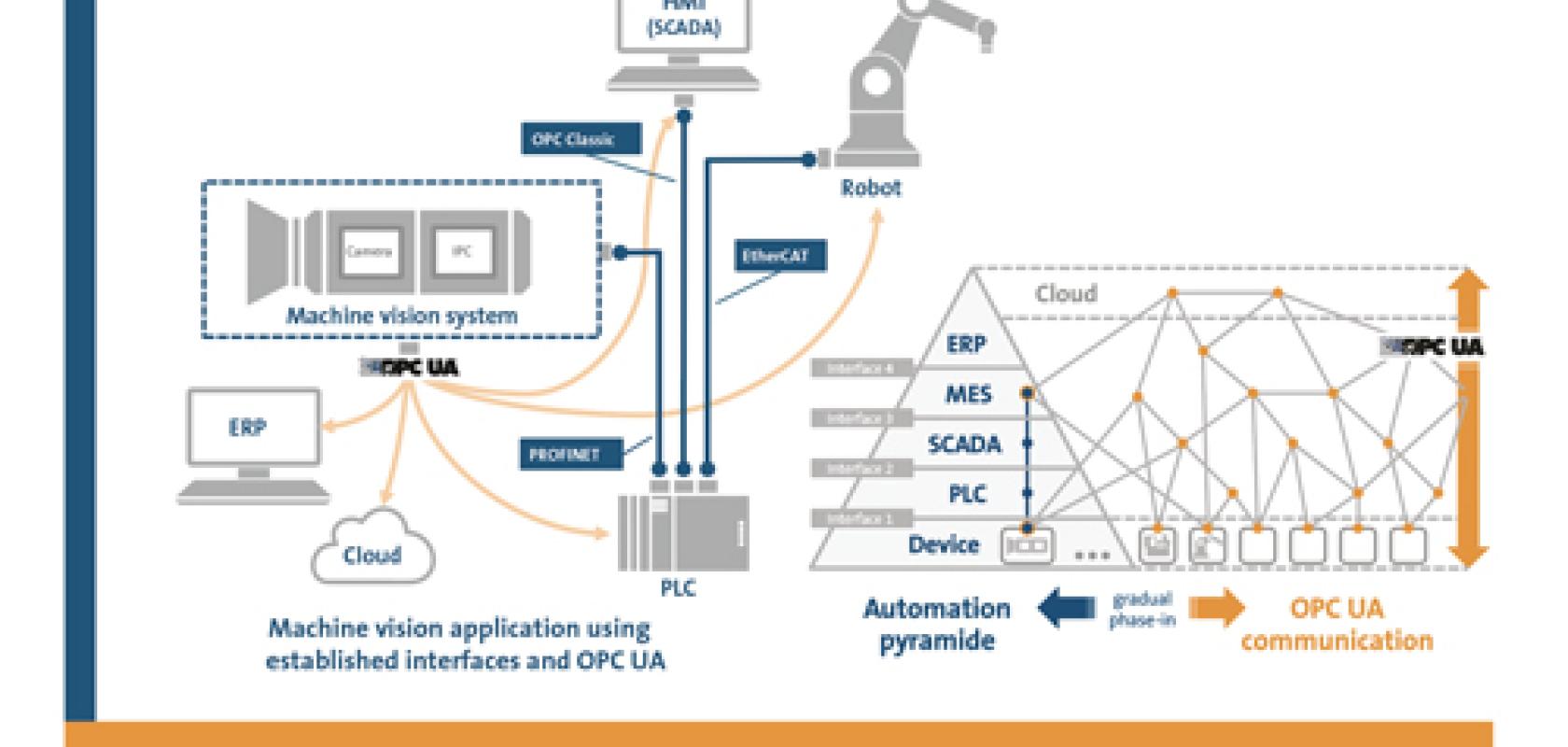At the recent OPC UA Automotive Day in Wolfsburg, Asentic, Bosch, Vitronic and Peer Group presented demos of OPC Machine Vision, part 1. A requirement of the OPC Machine Vision working group for a viable release was to implement the specification and test it using a real example, which has now been achieved.
In the coming weeks, the working group will follow up on its own experiences from the test implementation, as well as feedback on the draft release from the OPC Foundation and the international machine vision community. If everything goes according to plan, the final OPC Machine Vision, part 1, specification will be published as VDMA standard sheet 40100-1 on 1 September.
The OPC UA Companion Specification for Machine Vision (OPC UA Machine Vision for short) offers a generic model for all machine vision systems – from simple vision sensors to complex inspection systems. It is not just a matter of supplementing or replacing existing interfaces between an image processing system and its process environment using OPC UA, but rather of creating non-existent horizontal and vertical integration capabilities in order to communicate relevant data to other authorised process participants, up to the organisation IT level, for example.
It is possible to introduce OPC Machine Vision step by step, in addition to other interfaces. The advantages are a shorter market entry time through simplified integration, generic applicability and scalability, as well as improved customer perception through defined and consistent semantics. OPC Machine Vision enables an image processing system to talk to the entire factory and beyond.
Next steps
Part 1 lays the foundation, a kind of infrastructure layer, that enables a simplified and uniform integration of all possible machine vision systems into higher IT production systems (PLC, SCADA, MES, ERP, Cloud, etc). The idea is that in subsequent parts, other proprietary elements are broken down and replaced by standardised information structures and semantics, such as configuration, recipe and result information. The generic basic information model will be extended to a more specific capability-based information model. Image processing capabilities, for instance, include presence detection, completeness check, position detection, and much more. The proprietary black boxes are separated from input and output data and replaced by standardised information structures and uniform semantics. In addition, there is currently another line of development: the vertical extension into the components of a machine vision system.
At the International Vision Standards Meeting (IVSM) in Suzhou in March, a new working group was founded, which will work on part 2 under Dr Ralf Lay, of Silicon Software, who will chair the working group.
In addition, representatives of the VDMA OPC Machine Vision initiative are participating in the interoperability committee of the VDMA and the OPC Foundation, which aims to build cross-industry interoperability.

